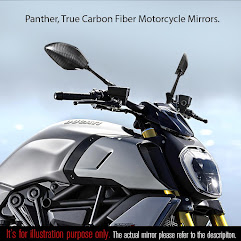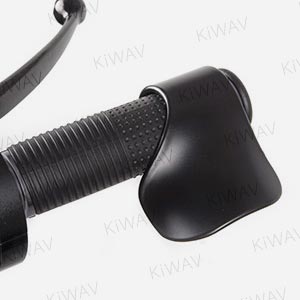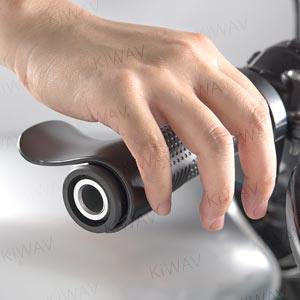Introduction
When it comes to personalizing and upgrading your motorcycle, changing the stock mirrors to aftermarket mirrors can be a small yet impactful modification. Motorcycle mirrors play a crucial role in ensuring safety and enhancing the overall aesthetics of your ride. However, before you dive into the world of aftermarket mirrors, there are several factors you should consider to make an informed choice. In this article, we will explore the key aspects to keep in mind when changing motorcycle mirrors, from functionality to style.
Table of Contents
- Why Consider Aftermarket Mirrors
- Types of Aftermarket Mirrors
- Compatibility with Your Motorcycle Model
- Mirror Size and Visibility
- Adjustability and Range of Motion
- Build Quality and Materials
- Anti-Vibration Features
- Installation Process
- Legal Considerations
- Aesthetics and Style
- Brand Reputation and Reviews
- Budget and Pricing
- Maintenance and Durability
- Comparison with Stock Mirrors
- Conclusion
Why Consider Aftermarket Mirrors
Stock motorcycle mirrors are designed to meet general requirements, but aftermarket mirrors offer a range of benefits that can enhance your riding experience. They often provide better visibility, improved aesthetics, and innovative features that cater to individual preferences.
Types of Aftermarket Mirrors
Aftermarket mirrors come in various styles, including bar-end mirrors, folding mirrors, LED-integrated mirrors, and more. Each type has its own advantages and aesthetic appeal, so choose one that suits your riding style and preferences.
Compatibility with Your Motorcycle Model
Ensure that the aftermarket mirrors you choose are compatible with your motorcycle model. Check for any specific fittings or adapters required to install the mirrors correctly.
Mirror Size and Visibility
Opt for mirrors with an adequate size that provides clear visibility of the rear. Larger mirrors can minimize blind spots and enhance your overall awareness of the road behind you.
Adjustability and Range of Motion
Look for mirrors that offer a wide range of adjustability. The ability to easily adjust the mirrors' angle and position ensures that you have a clear view regardless of your riding posture.
Build Quality and Materials
Invest in mirrors made from high-quality materials such as aluminum or stainless steel. These materials are durable and can withstand the elements, ensuring the longevity of your mirrors.
Anti-Vibration Features
Motorcycles can generate vibrations that blur the reflection in the mirrors. Choose mirrors with anti-vibration features to maintain a clear view of the road behind you, even at higher speeds.
Installation Process
Consider the complexity of installing the aftermarket mirrors. Some mirrors might require professional installation, while others can be easily installed at home.
Legal Considerations
Before making any modifications, ensure that the aftermarket mirrors comply with local laws and regulations. Some regions have specific requirements regarding the size and positioning of mirrors.
Aesthetics and Style
Aftermarket mirrors are an opportunity to add a personal touch to your motorcycle's appearance. Choose mirrors that complement the overall aesthetic of your bike.
Brand Reputation and Reviews
Research reputable brands known for producing high-quality aftermarket motorcycle mirrors. Read reviews from other riders to get insights into the performance and durability of the mirrors.
Budget and Pricing
Set a budget for your aftermarket mirrors and explore options within that range. Remember that higher-priced mirrors might offer advanced features, but there are also budget-friendly options with good quality.
Maintenance and Durability
Consider the maintenance requirements of the mirrors. Opt for mirrors that are easy to clean and resistant to environmental factors.
Comparison with Stock Mirrors
Compare the features, visibility, and overall performance of aftermarket mirrors with your stock mirrors. This will help you understand the improvements you can expect.
Conclusion
Changing motorcycle mirrors from stock to aftermarket can significantly enhance your riding experience by improving visibility, aesthetics, and functionality. When selecting aftermarket mirrors, consider factors such as compatibility, size, adjustability, build quality, legal requirements, and your personal style preferences. By making a well-informed choice, you can enjoy a safer and more enjoyable ride while adding a unique touch to your motorcycle.
FAQs
1. Are aftermarket mirrors legal to use on motorcycles?
Aftermarket mirrors can be legal as long as they meet local regulations regarding size and positioning. Always ensure compliance with the law.
2. Can I install aftermarket mirrors myself?
The ease of installation depends on the type of mirrors and your mechanical skills. Some mirrors are easy to install, while others might require professional help.
3. Are bar-end mirrors better than traditional mirrors?
Bar-end mirrors can offer a sleeker look and reduce vibrations, but they might provide different visibility compared to traditional mirrors.
4. Do expensive mirrors guarantee better quality?
While higher-priced mirrors often offer advanced features and better materials, you can find quality mirrors within different price ranges.
5. How often should I inspect and maintain my aftermarket mirrors?
Regularly inspect your mirrors for any damage or loose fittings. Clean them as needed to maintain clear visibility during rides.
























